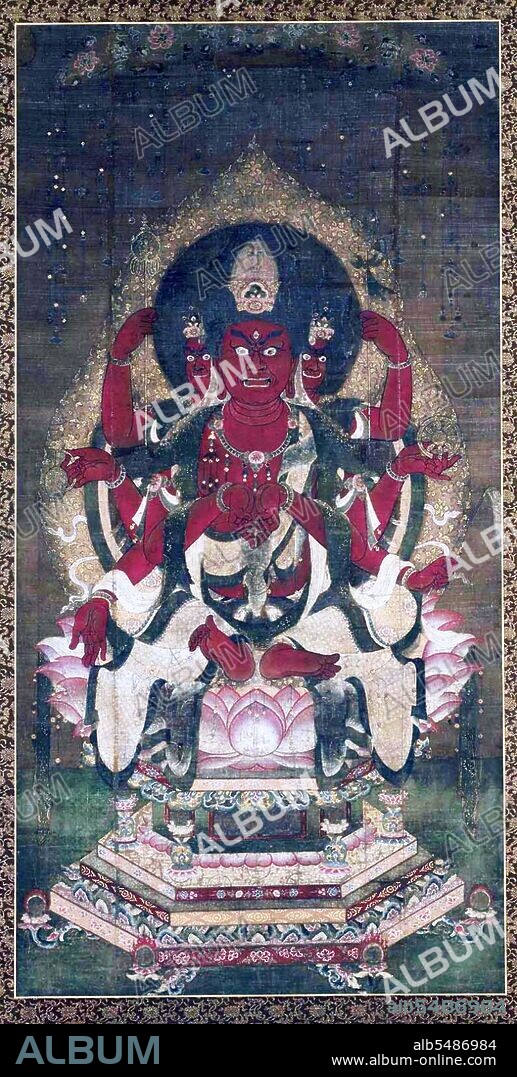alb5486984
Japan: Bato Kannon, the horse-headed Bodhisattva of Compassion, Kyoto,12th century

|
Añadir a otro lightbox |
|
Añadir a otro lightbox |



¿Ya tienes cuenta? Iniciar sesión
¿No tienes cuenta? Regístrate
Compra esta imagen

Título:
Japan: Bato Kannon, the horse-headed Bodhisattva of Compassion, Kyoto,12th century
Descripción:
Ver traducción automática
Hayagriva (also Hayagreeva; Sanskrit: Hayagriva) is a horse-headed deity that appears in both Hinduism and Buddhism and is known as Bato Kannon in Japan. In Hinduism, Hayagriva is also considered an Avatar of Vishnu. He is worshipped as the God of Knowledge and Wisdom, with a human body and a horse's head, brilliant white in color, with white garments and seated on a white lotus. Symbolically, the story represents the triumph of pure knowledge, guided by the hand of God, over the demonic forces of passion and darkness. In Japan, Bato Kannon ???? is the Horse-Headed Kannon (Guanyin). Protector of Animals. Bato Kannon appears in the Mahavairocana Sutra (Jp. = Dainichikyo ???; composed sometime in the 6th / 7th century AD) and other tantric texts. He is thus a member of the esoteric pantheon. Bato is also one of the Six Kannon. In this latter role, Bato protects those reborn in the animal realm (chikushodo ???), a realm characterized by stupidity and servitude. In Japan, farmers pray to Bato Kannon for the safety and preservation of their horses and cattle. Bato Kannon is not only said to protect dumb animals, particularly those who labor for mankind, but extends those powers to protecting their spirits and bringing them ease and a happier life than they experienced while on earth.
Crédito:
Album / Pictures From History/Universal Images Group
Autorizaciones:
Modelo: No - Propiedad: No
¿Preguntas relacionadas con los derechos?
¿Preguntas relacionadas con los derechos?
Tamaño imagen:
2574 x 5100 px | 37.6 MB
Tamaño impresión:
21.8 x 43.2 cm | 8.6 x 17.0 in (300 dpi)
 Pinterest
Pinterest Twitter
Twitter Facebook
Facebook Copiar enlace
Copiar enlace Email
Email
